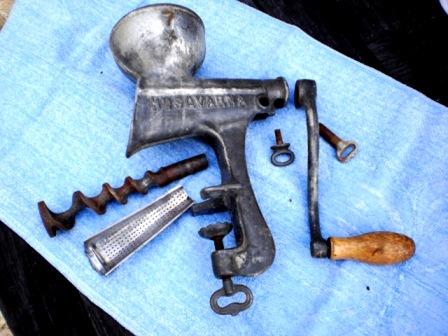Jam or preserves are a paste of fruits with pectin, acid and sugar.
For preserves the whole fruits are used (, they can be cut down).
For jam, the fruit is pureed or finely chopped during cooking.
For jelly, only the juice of the fruit is used.
Marmalade is made from quince, or (the peel of) citrus and therefore is bittersweet.

Jam can be derived from the English to jam: fine pressing. Jam is traditionally made by boiling fruit with equal sugar that ensures the preservation of it. Less sugar preserves shorter. Pectin is a component of the cell walls of plants and fruits, and acts as a binder. The gel is formed as pectin is boiled with sugar and acid.
Little pectin is in cherries and strawberries, figs, morello (sour cherries), blackberries, blueberries, raspberries, rhubarb.
Sufficient to much pectin can be found in (seeds and skins of) just ripe apple, plum and orange, quince, currants, pears, citrus fruits, gooseberries, not too ripe apricots.
Pectin is usually extracted from citrus peels and seeds or apples.
Making pectin
Pick sour, unripe fruit early in the season: gooseberries, sour apples, red berries. Cook for about three quarters of an hour in a little water. Let the pulp drain through a cloth. The leaked juice is very rich in pectin. You can save it 3 to 4 weeks in the refrigerator.
Add to preparations (jams) the pectin before adding the sugar.
For a well thick jam or jelly also acid is needed. You can add it as citric acid or lemon juice.
Cooking should happen stirring on a high heat to evaporate as much water as possible.
After about seven minutes of boiling, the gel should be formed. If there is too much water in the fruit, after 20 minutes a new gel phase occurs. If it still does not work then will continue cooking make it a dark caramelized jam that is hard and tastes like caramel.
Check the thickening and gel forming with a drop of jam, cooling on a cold plate.
The reversion of the enclosed, not fully filled goblets ensures that the covers come into contact with the hot jam and thereby be ’sterile’. The cooling reduces the air compartment and the lid is sucked airtight. Covering with melted paraffin or wax also works. Afterwards you can cover this with paper or textile, to keep the border longer mold free.
A fruit mill looks like a meat grinder, but the screw is conical. Thus, the dry fraction (of e.g. red berries) is pressed back out the mill, while the juice is pressed through the underlying grid along ahead of the mill. It gives you muscled arms!
